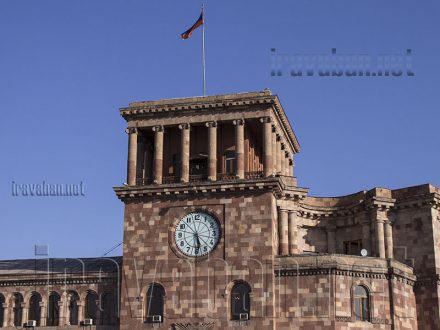Which spheres are the most corrupted and why according to the Ministry of Justice?
According to the authors of the RA Anti-Corruption Strategy, healthcare, education, state revenue collection and police in terms of providing public services are the most corrupted areas.
The responsible officials of these spheres failed to provide any documents to the Ministry of Justice and thus proved the latter’s opinion.
Mr. Armen Gevorgyan, Head of the Staff of the RA Ministry of Justice, in the written reply to Iravaban.net informed that the concept of the daft was compiled by the working group and the results of a number of studies were considered to determine the spheres.
Specifically, according to the reply, the “Caucasus Research Resource Center (CRRC)-Armenia conducted a survey on the level of corruption in Armenia in 2010, which was aimed to assess the level of public perception of the corruption and the anti-corruption efforts.”
The experts considered that the prosecutor’s office, the courts, the Central Electoral Commission, and the law-enforcement agencies were most corrupted structure in Armenia. In terms of widespread corruption practices the following spheres were mentioned: healthcare, the electoral system, education, traffic police, tax service, police, customs, Judicial Acts Compulsory Enforcement Service, and the State Cadastre.
In addition, according to Mr. Armen Gevorgyan’s letter, the sociological survey “Government Success Index (GS Index), Visibility, Achievements and Shortcomings and Strategical Proposals for Development” conducted by IPSC (Institute for Political and Sociological Survey), contained data on the level of corruption in Armenia as well.
According to the survey the highest corruption indexes were observed in the system of police, judicial system, tax and custom services, the traffic police and the higher educational establishments (universities).
It also indicates that in November 2012 compared with December 2011, the decrease of the level of corruption was recorded in schools, the traffic police, cadastre, universities, tax and customs agencies, and on the contrary there was an increase in corruption level in military registration offices, the judiciary, police, and medical institutions.
The results of Transparency International’s Global Corruption Barometer 2013 survey also served as a basis. According to it the most corrupted spheres were the judicial system 69%, civil servants 68%, healthcare organizations 68%, police 66%, and education system 58%.
According to the letter, it is clear from the above findings of the surveys, that the most corrupt sectors are healthcare, education, police, judiciary, prosecutors, tax and customs services.
Given the fact that a number of several measures are planned in the framework of the 2012-2016 Legal and Judicial Reforms Strategic Plan aimed at raising the efficiency of the judiciary, the prosecutor’s office, public notary and public register management systems including the mentioned spheres in the Anti-Corruption Strategy was not considered thus there are only 4 spheres.
A 2-4 years old surveys cannot provide today’s complete situation
Mr. Samvel Manukyan, PhD in Social Sciences will not recommend the Government to base on these surveys, given the fact that they cannot provide today’s complete situation: “It is possible that the situation has changed, because such sociological surveys of corruption occurrences can record considerable changes,” he said.
According to him, this sphere is quite variable and 2-4 years old studies cannot provide the complete picture: “Referring to the resulted of 2011, 2012 or 2013 surveys today, on 2015 is not quite accurate, ” said the PhD.
Sector’s Responsible Departments are unaware
The responsible departments of the sectors did not send surveys to the Ministry of Justice.
We tried to clarify from the four departments: the RA Ministries of Finance, Education and Science, Healthcare, as well as from the RA Police whether they had sent any surveys to the Ministry of Justice of the RA. Finally, it is anticipated that this process should have a nature of bilateral cooperation, but in fact it is not like this.
Thus, the Ministry of Finance advised to apply to the Ministry of Justice, the same offer was made by the Ministry of Health.
Ministry of Education and Science in the written reply informed that a number of documents that refer to the corruption risks, which exist in education sphere are accessible in the website. However the notice did not indicate whether they had sent the survey to the Ministry of Justice.
The RA Police responded with a letter informing that the RA Ministry of Justice had instructed the departments, including the RA Police, to propose measures on “Anti-Corruption policy in the sphere of the services provided to the public by the police,” to be included.
By the Way
When the process of the approval of the Anti-Corruption Strategy was approaching to its accomplishment; over 100 NGOs refused to participate in the competition. Specifically, the Anti-Corruption Coalition uniting more than 70 NGOs refused to participate in the competition for participation in this council. The Public Network for cooperation with State Authorities consisting of 150 NGOs, joined to the statement of the Coalition.
In addition to abstaining from participation in the competition, these organizations stepped forward with an important recommendation: to include the social sphere in the strategy, and to finally solve the issue of criminalization of the illicit enrichment. However, the Government has not gone forward to the proposals of NGOs yet.”
Gevorg Tosunyan































